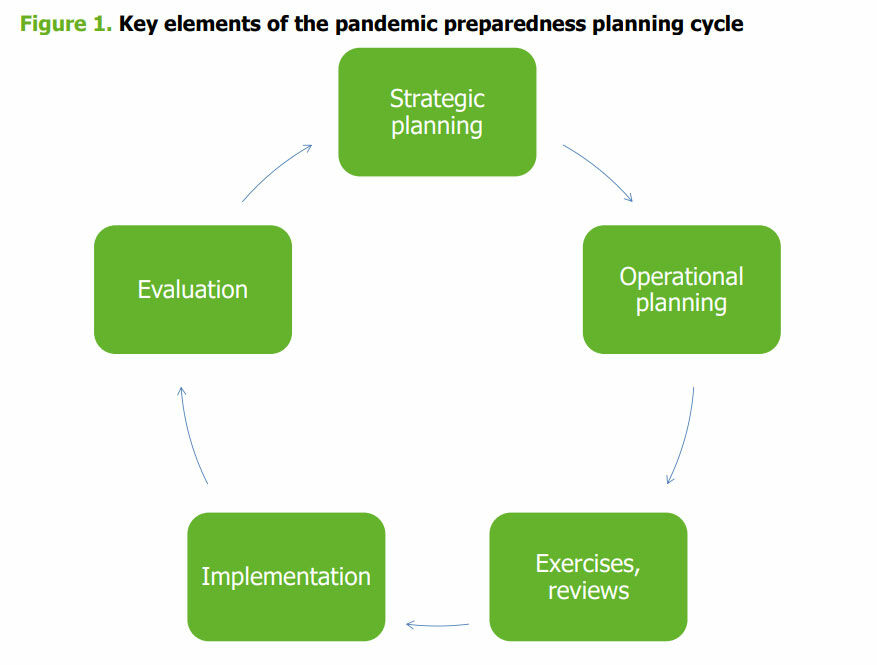Why is pandemic preparedness planning important?
Influenza pandemics, whether mild, moderate or severe, affect a large proportion of the population and require a multisectoral response over several months or even years. For this reason, countries develop plans describing their strategies for responding to a pandemic supported by operational plans at national and subnational levels. Preparing for an influenza pandemic is a continuous process of planning, exercising, revising and translating into action national and subnational pandemic preparedness and response plans. A pandemic plan is thus a living document which is reviewed at intervals and revised if there is a change in global guidance or evidence-base; lessons learned from a pandemic, an exercise, or other relevant outbreak; or changes to national or international legislation related to communicable disease prevention and control (Figure 1).

Pandemic preparedness is most effective if it is built on general principles that guide preparedness planning for any acute threat to public health. This includes the following:
- Pandemic preparedness, response and evaluation should be built on generic preparedness platforms, structures, mechanisms and plans for crisis and emergency management.
- To the extent possible, pandemic preparedness should aim to strengthen existing systems rather than developing new ones, in particular components of national seasonal influenza prevention and control programmes.
- New systems that will be implemented during a pandemic should be tested during the inter-pandemic period.
- Adequate resources must be allocated for all aspects of pandemic preparedness and response.
- The planning process, implementing what is planned, testing and revising the plan in order for key stakeholders to familiarise themselves with the issues at hand, may be even more important than the pandemic plan itself.
- Pandemic response requires that business continuity plans and surge capacity plans be developed for the health sector and all other sectors that could be affected by a pandemic to ensure sustained capacity during a pandemic.
- The response to a pandemic must be evidence-based where this is available and commensurate with the threat, in accordance with the IHR. Planning should be based on pandemics of differing severity while the response is based on the actual situation determined by national and global risk assessments.
- Not all countries will be in a position to contribute to global risk assessment, nor conduct evaluations such as pandemic vaccine effectiveness. They must all have the capacity to access and interpret data for risk assessment provided by WHO, ECDC, and from other countries or sources.




